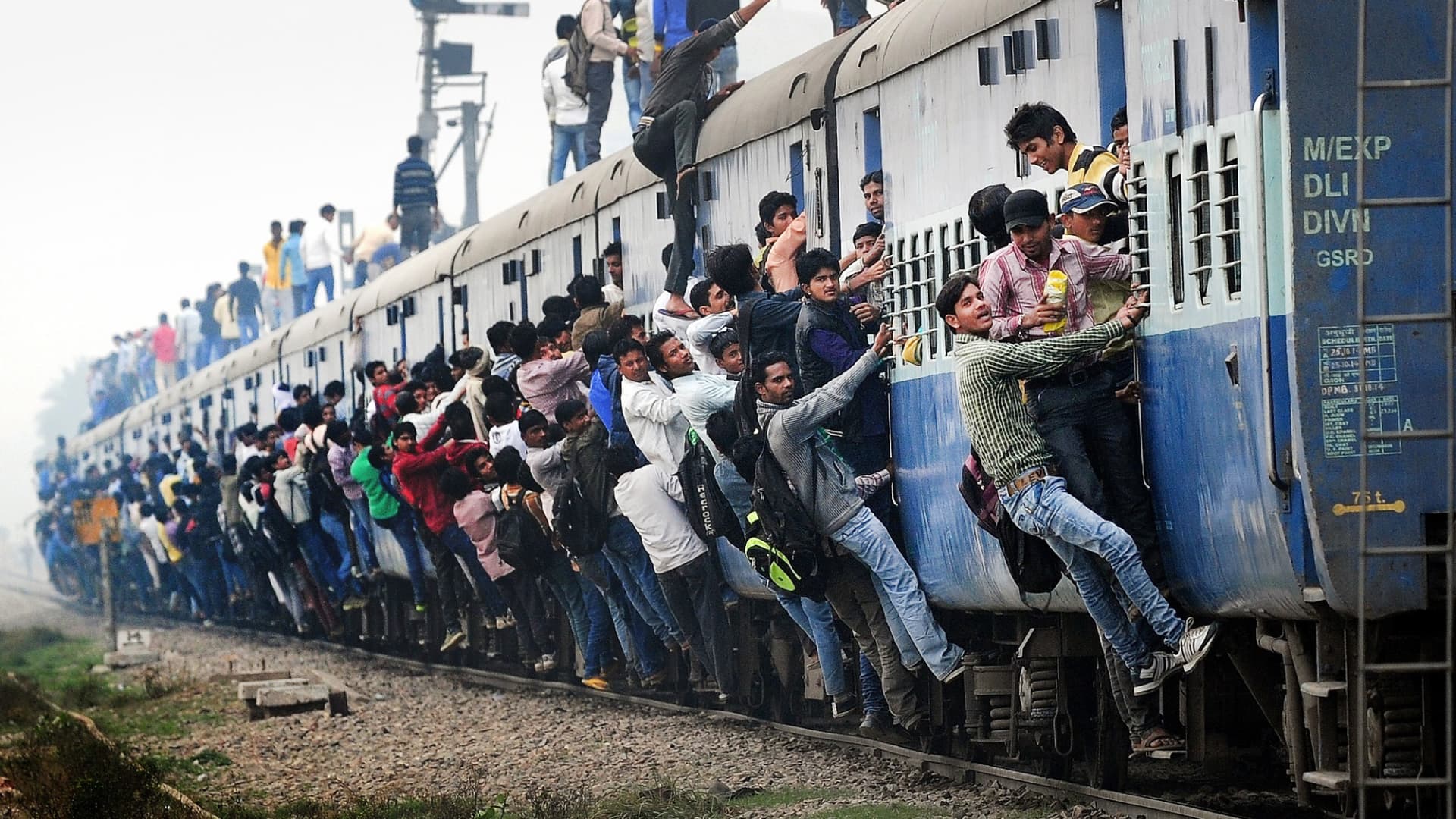
Indian passengers stand and hang onto a train as it departs from a station on the outskirts of New Delhi.
Money Sharma | AFP | Getty Images
The world population reached 8 billion people on Tuesday, and India is expected to surpass China as the most populous country in the next year, according to projections from the United Nations.
The global population has more than tripled since 1950 as mortality dropped and life expectancy increased, due in large part to better sanitation, access to clean drinking water, and the development of vaccines and antibiotics, along with improved nutrition.
Between 1990 and 2019, human life expectancy at birth increased by almost nine years to age 72, according to the U.N. People in the poorest nations, however, died about seven years earlier than the global average due to high levels of child and maternal mortality, war and the HIV epidemic.
Life expectancy fell by a year to 71 in 2021, due in large part of the effects of the Covid-19 pandemic. Still, people born in 2050 are expected to live until age 77 on average.
Although humanity is larger than it has ever been, the world population is now growing at its slowest rate since 1950 as families have fewer children. The population is expected to peak at 10.4 billion in the 2080s and remain at the level into the 2100s, according to the U.N. projections.
Two-thirds of people now live in countries where women on average have about two children, down from five kids on average in 1950. The population of people ages 65 and over is expected to increase by 6% globally through 2050, according to the U.N.
Just eight countries will make up half of the world’s population growth by 2050 and they are primarily concentrated in Africa and South Asia: Democratic Republic of the Congo, Egypt, Ethiopia, India, Nigeria, Pakistan, the Philippines and Tanzania.
The two most population regions of the world in 2022 were South and East Asia, and China and India accounted for the majority of people in these regions at 1.4 billion each. Though China has more people than any country in the world, its population will start declining as early as 2023 and India will surpass it.






